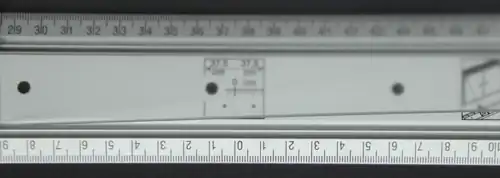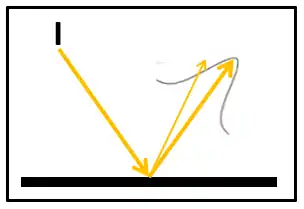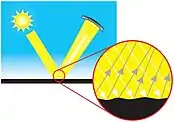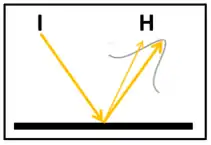Distinctness of image
Distinctness of image (DOI) is a quantification of the deviation of the direction of light propagation from the regular direction by scattering during transmission or reflection. DOI is sensitive to even subtle scattering effects; the more light is being scattered out of the regular direction the more the initially sharp (well defined) image is blurred (that is, small details are lost). In polluted air it is the sum of all particles of various dimensions (dust, aerosols, vapor, etc.) that induces haze.[1]




A new high sensitivity/high resolution sensor allows improved measurement.
DOI is measured to characterize the visual appearance of polished high-gloss surfaces such as automotive car finishes, mirrors, beyond the capabilities of gloss.
Other appearance phenomena are: gloss, haze, and orange peel. Various categories of visual appearance related to the perception of regular or diffuse reflection and transmission of light have been organized under the concept of cesia in an order system with three variables. In this system, DOI is connected to the variable called diffusivity.
Reflected Image Quality (RIQ) vs. DOI
DOI is not sensitive to low amounts of orange peel on highest quality surfaces.
RIQ has more proportionate response to orange peel on a wider range of surface finishes.
RIQ works well in differentiating low gloss surfaces with different specular/diffuse components.
Parameters that affect RIQ
- Substrate alignment (horizontal/vertical)
- Coating formulation
- Substrate
- Application technique
References
- Fan, Charles H. "Validation of Orange Peel Measurement of Paint Appearance on Composite Substrates" General Motors Corporation
- ASTM Standards on Color & Appearance Measurement
- Richard S. Hunter, The Measurement of Appearance, John Wiley & Sons (1987)